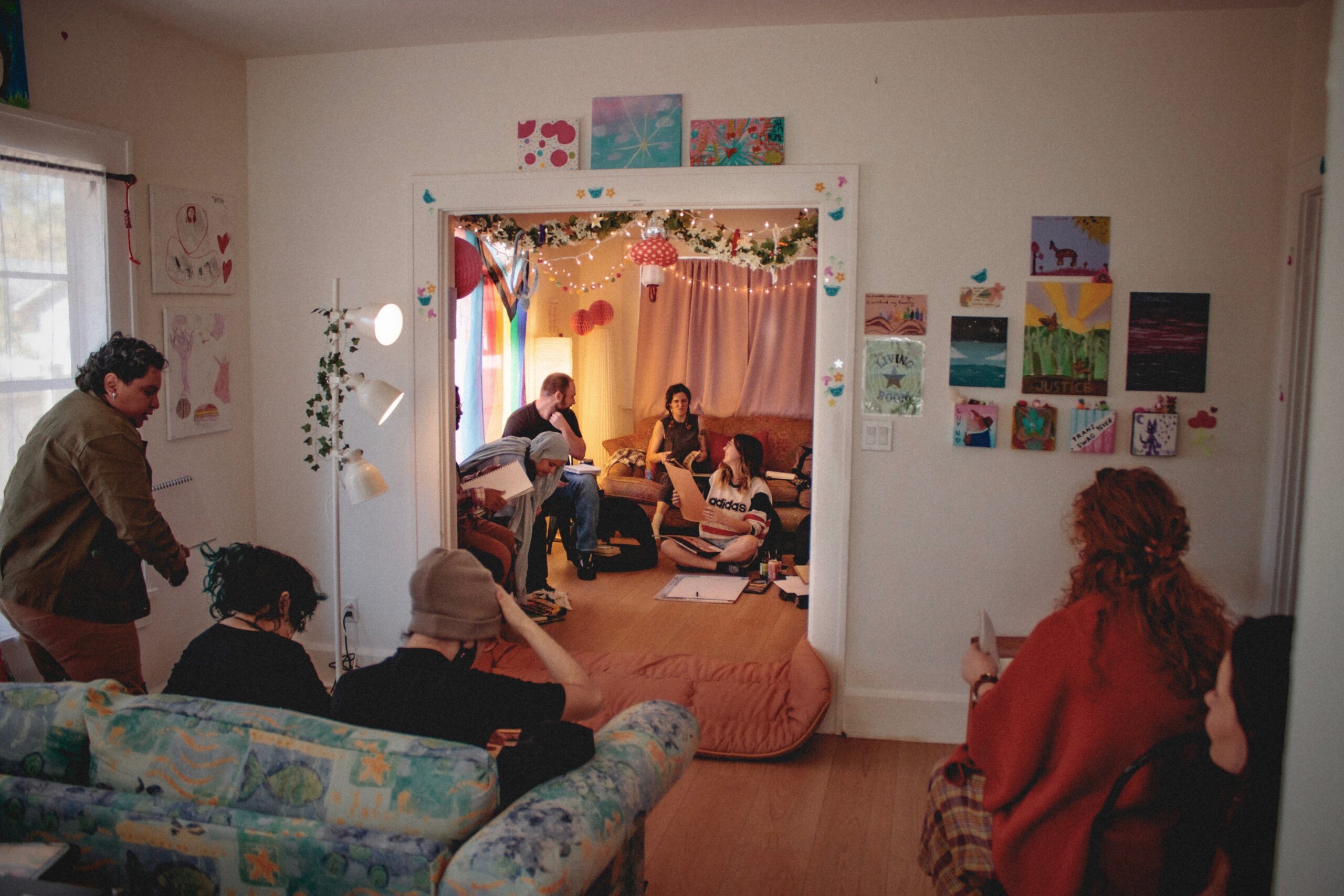Jennifer Livaudais said she wanted to make a difference before she graduates in May.
Livaudais, a USF St. Petersburg graphic design student, said the goal was to apply her studies to art therapy, and learn how they can be used in a curative way.
To achieve this, she had to take on a role different from her two part-time positions as a graphic design intern.
And she did.
As a facilitator at the USF Art at the Clinic, Livaudais now works closely with a group of people who have aphasia — a communication disorder caused by brain damage, impacting a person’s ability to form or understand speech.

USFSP senior Jennifer Livaudais, 20, helps clients with aphasia learn how to draw still life images as part of her internship with USF’s Art at the Clinic program.
In partnership with the USF Contemporary Art Museum, the clinic explores the junction where art and healthcare meet.
Weekly workshops provide student interns with interprofessional training in observation, critical thinking and communication, according to the university website.
Accompanied by their caregivers and spouses, clients participate in classes that allow them to express themselves through a variety of artistic projects while also meeting people living with similar conditions.
“Aphasia usually happens after a stroke and affects the Broca and Wernicke areas of the brain. It doesn’t affect their intelligence – just their communication,” said Livaudais. “There are different levels of severity. Sometimes they get their words mixed up and you have to talk in short, clear sentences, but I usually just talk normally and allow them to speak at their own pace.”
Livaudais developed a viable plan with Dolores Coe, an Art in Health instructor and clinical faculty member of the USF Speech-Language Clinic.
Coe has worked with several artists and university students to create structured lessons for people who experience some degree of cognitive impairment.
Livaudais met the group on Feb. 9, before her first official class.
“I wanted to get everyone on the same page. We introduced ourselves, and the clients all showed their paintings that they’d worked on throughout the year,” she said. “It was just a way to get to know one another.”
In the next 10 sessions, she will apply art materials and techniques to teach the class basic design exercises.
“We got all of the new clients acclimated to drawing,” Livaudais said. “I helped some of them move their hands around on the page with a pencil. We just tried to make sure everyone understood.”
With Coe’s supervision, Livaudais developed a project involving personalized aphasia awareness cards that contain information about the disorder. Each person in the group will transform a photograph of their hand into an abstract portrait using design principles they’ve learned, with their artwork featured on their individual cards. The cards can be handed out to help educate people about aphasia and how to communicate with someone who has the condition.
While Livaudais recognizes the challenge of maintaining three internships while also leading an art therapy class, she said it’s worth it.
“It’s not the kind of work I’m used to,” she said. “I don’t like public speaking or anything like that, but so far, this has helped me grow and communicate my ideas.”
Livaudais said she’s grateful to find an opportunity that incorporates her creative passions in a unique and valuable way.
“When people get it, when they finally understand the concept of it, I feel like that’s the most rewarding part,” she said. “I would love to be able to use design and art in my career to help people some day.”


